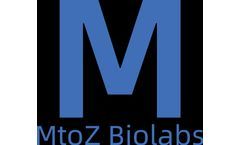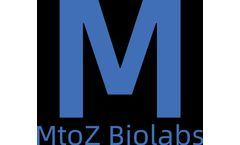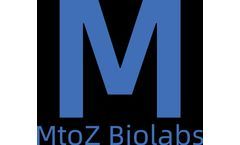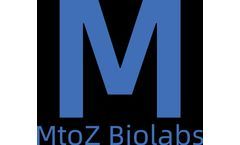Antigens And Antibodies Articles & Analysis
32 articles found
Antibodies, which are proteins produced by the immune system, have the ability to specifically recognize and bind to antigens, making them powerful tools in medicine. ...
Latex Agglutination Assays: The Role of Dyed Polystyrene Particles Latex agglutination is the change in agglutination capacity observed when a sample containing a specific antigen is mixed with antibodies coated on the surface of latex particles. Agglutination can also be reversed by coating latex particles with specific antigens and testing the ...
Single-domain antibodies consist of a single polypeptide chain that retains the ability to bind specifically to antigens. ...
CD BioSciences, a biotech company specializing in centrosomal study, has recently launched new services for anti-centrosome antibody development. The services help identify and track centrosomes in experiments, demonstrating the strength of anti-centrosome antibodies as a great tool for centrosome research. ...
To grasp how cancer vaccines work, it is pivotal to understand two fundamental components of the immune system: antigens and antibodies. Antigens are molecules or molecular structures that evoke an immune response when identified as foreign by the body's immune system. ...
This article mainly introduces how to detect the ubiquitination level of a protein.ImmunoblottingImmunoblotting is a common method for detecting the level of protein ubiquitination, mainly through the detection of ubiquitinated proteins in protein samples using specific antibodies. Firstly, the protein sample is separated by SDS-PAGE, then the protein is transferred to a ...
The Unique Value and Challenges of Peptide Antigens in Antibody DiscoveryChoosing the right antigen is crucial in antibody discovery. The method of using peptides as antigens has been around for over 60 years. With technological advancements, we now have more novel avenues to choose from, such as recombinant ...
This epitope can be a unique area in the target antigen with specificity, allowing the antibody to accurately recognize and bind to it; or it can be those areas with cross-reactivity, allowing the antibody to interact with other proteins with similar sequences.Determine the Type of ExperimentThe types of experiments suitable for ...
Therapies based on mAbs have now become the gold standard for cancer treatment, and the number and types of clinically applicable mAb-based therapies are also increasing.1. Antibody SequencingAntibody sequencing can reveal antigen-antibody binding affinity, antibody epitopes, and post-translational modifications, and precise ...
Antibodies are an essential part of our immune system, capable of recognizing foreign molecules (antigens) and helping to eliminate them. ...
Both methods can detect the complete molecular weight. Total antibody analysis Total antibody analysis measures all antibodies in the sample, including bound antibodies (DAR≥1) and unbound antibodies (DAR = 0), which can be used to assess whether the ADC meets the general PK characteristics of monoclonal ...
In addition, polystyrene nanoparticles exhibit excellent biocompatibility and flexibility, facilitating effective conjugation with specific proteins and antibodies. Increased sensitivity and specificity: Each particle of colored polystyrene nanoparticles is carefully designed in size and coated with specific ‘capture molecules’ designed to trap their intended targets. ...
Utilizing the important role of yeast in genetic research, the research of biotinylated recombinant protein antibody in vivo can be realized. What are recombinant antibodies? Traditional polyclonal and monoclonal antibodies are the product of normal B cell development and genetic recombination and are produced by immunizing animals with an ...
In addition, dendritic cells can recruit aluminum-adsorbed antigen-antibody complexes, and complement factors can modulate receptors on B cells to form aluminum-adsorbed antigen-antibody complexes, thereby promoting immune responses. ...
Among them, the specific interaction between receptors and ligands can be used to target ligand-labeled liposomes to organs, tissues or cells containing ligand-specific receptors, and the binding of receptors and ligands can promote lipid Internalized into cells. Monoclonal antibodies can also be coupled with liposomes to construct immunoliposomes (or affinity liposomes), and the ...
Immunohistochemistry is the study of the localization, characterization, and relative quantification of peptides and proteins in tissue cells using the antigen-antibody reaction, in which an antigen specifically binds to an antibody and a chemical reaction results in the visualization of dyes such as fluorescein and other ...
The immune response is divided into specific and non-specific. The antigen and antibody responses are generally referred to as specific immune responses, which require the participation of B cells and T cells. ...
Each color microsphere is covalently cross-linked with a probe, antigen or antibody targeting a specific assay. The different microspheres bind proteins (antibodies or antigens for immunoassays) against different substances to be detected. The detection antibody is labeled with biotin and stained with a highly ...
SnugDock Tutorials: SnugDock focuses on antibody-antigen binding epitopes and antibody drug development. It addresses challenges in predicting accurate antigen-antibody complexes and explores flexible docking to capture conformational changes during binding. ...
BetaLifeScience provides high-quality MMP-3 antigens and antibodies that have been validated on LF (Lateral Flow) and CLIA (Chemiluminescent Immunoassay) platforms, contributing to the development of in vitro diagnostic test kits. ...















